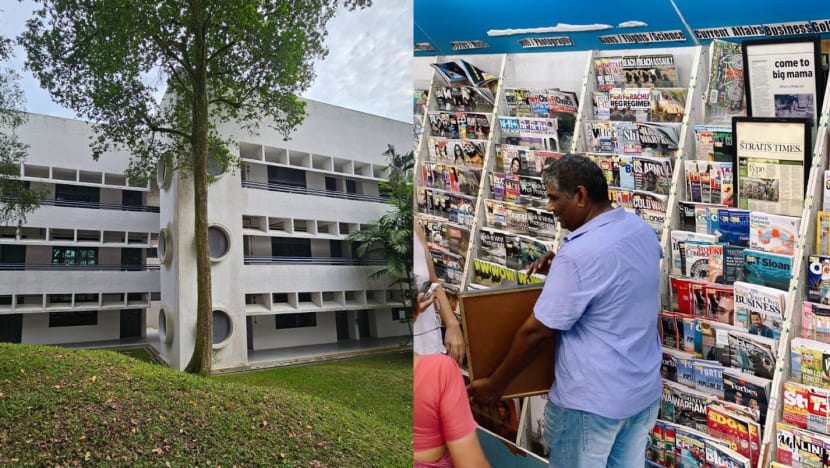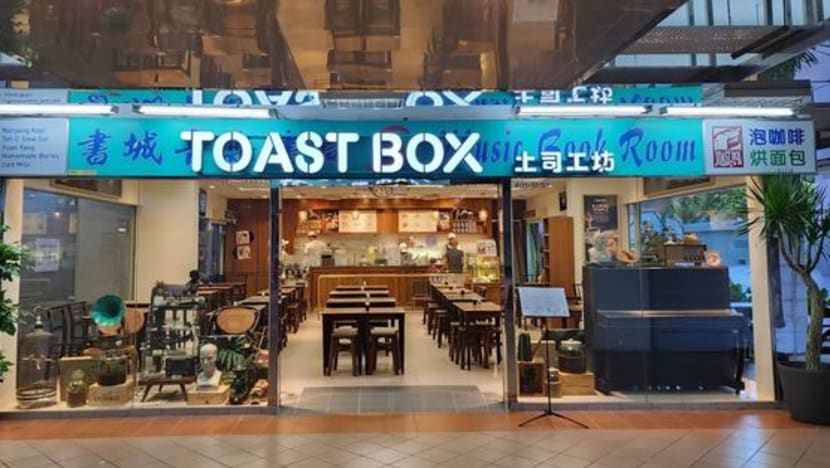Commentary: Thambi newsstand closure is a lesson in appreciating the present
We are tempted to think preserving, documenting and remembering old places is a kind of nostalgia that holds us back from moving on. Not so, says sociologist Terence Heng.

From left: The former Raffles Junior College campus and Thambi Magazine Store in Holland Village. (Photos: Facebook/Eisen Teo, CNA/Grace Yeoh)

This audio is generated by an AI tool.
SINGAPORE: The closure of Thambi Magazine Store in Holland Village last month replayed a familiar scene in Singapore.
A beloved place, fondly remembered by multiple generations, decides to shut down after several years of declining demand and insurmountable obstacles.
Upon hearing about the imminent closure, Singaporeans would emerge from their social media activity caves to, well, indulge in more social media activity by filming, photographing and (albeit rightfully) bemoaning the loss of what they’d describe as yet another piece of Singapore's identity.
Often, they’d also panic buy from the very places they had not patronised for decades. Because, as one would say in Singlish, “last chance mah”.
Despite what appears to be a superficial engagement with the past, I believe that such last-minute action and reaction - and this is common throughout the world - is an indication of just how important the past, and heritage, is to people.
NOSTALGIA IS NOT A BAD THING
There is another viewpoint though, and that is that the loss of Thambi and other places like the old Raffles Junior College Mt Sinai campus is inevitable and, in some ways, necessary. It suggests that one must keep moving forward, and being sentimental about the past does not do anyone any favours.
This view also casts progress (often economic) and pastness (often cultural) as polar opposites. The past, couched in feelings of nostalgia, lacks purpose and usefulness. This is especially so of places that are neglected or lack novelty for financial gain. Nostalgia becomes an enemy that stymies society’s evolution.
Such a view is of course simplistic and does not recognise the very real value that the past has for our everyday lives. Many individuals and organisations, like the Singapore Heritage Society, have advocated for preserving monuments, institutions and places that are deeply connected to our Singaporean heritage.
Heritage, especially places of heritage, serves as active and constant connections to who we were and how we became to be. The emotions of losing a place, even a neglected one, cannot simply be dismissed as sentimentality. Rather, that sense of loss is partly about losing a sense of continuity, an anchor to something or somewhere.
Thankfully, there have been many instances in the last few years where the past has taken precedence over a “development at all costs” or “carte blanche” approach to spaces and places in Singapore. The preservation of several buildings from the Old Police Academy along Thomson Road is very good example of such thinking.
Whilst walking through Bras Basah Complex a few weeks ago, I also encountered the Toast Box branch that had taken over Music Book Room’s unit. The coffee joint has a music-inspired theme and kept key elements like Music Book Room’s signage and flooring.

Some might criticise this as a token attempt at preserving the past, but I thought it was at least a nod towards acknowledging what has come before and, more importantly, what new things could emerge from the old.
Thus, rather than destroying everything and starting from a blank slate, taking the time to see how past and present can co-exist offers more opportunities for society to express itself.
INTANGIBLE MEMORIES NEED TANGIBLE PLACES
Geographers often like to distinguish between the terms space and place. Space is the physical environment that individuals live in, but place is space made meaningful. More importantly, place only exists because individuals take the time to make it meaningful.
Architecture, or the built environment, is one important way of making a place. Buildings, monuments, even small things like decorations, shrines, kiosks and stalls all contribute to how a place gains its character and meaning.
Our memories and meanings of a place are embedded not just in tangible things like architecture, but also in the lives we have led in these places. Recently, when news came out that the old Raffles Junior College campus on Mt Sinai Road was marked for demolition, scores of alumni showed up. They were, of course, not just there for the building, but for the years of memories and experiences shared there.
Yet, these intangible memories and experiences are difficult to remember, sense or feel if there is nothing tangible to tie them to.
This is why we need to preserve and sustain more places. And these should not just be places that are economically or politically important, but also those that embody the everyday lives of everyday citizens. More importantly, we must work harder to sustain the institutions we do not want to lose, rather than trying to document them when we hear of their demise.
When preservation becomes physically impossible, then we need to be much more creative about the way we remember. Communities are strikingly clever when it comes to adapting and reimagining old places.
A recent social experiment in Peace Centre - which saw the abandoned mall transformed into an arts haven complete with graffiti covering the entrance - was a joy to behold even if it was only for a short while. Peace Centre is an example of what happens when grassroots, people-centred initiatives work.
LIKE SOMETHING? DON’T IGNORE IT
But not everything can stay the same, and while Singaporeans mourn the loss of old institutions, we simultaneously forget the old in favour of the new. Like many, I am guilty of walking past Thambi whenever I visited Holland Village and never stopping to buy a magazine. To me, Thambi was an important landmark that was core to the character of the place, yet I did little to support its longevity.
Yet the past can afford us many opportunities to become more creative, more expressive of our identities. In this spirit, I offer two possibilities for how we might be able to cherish a place. One, if it is a business we remember fondly, show some love by being a customer. Many older businesses survive on regulars rather than walk-ins.
Two, because we never know when a place we cherish will disappear, perhaps it is time to turn our attention away from our phones and relish just being somewhere. Too often we are hunched over, desperate for a dopamine hit on social media, ignoring all that is around us.
And what if you must use your phone? Where possible (and permitted), you could make use of your phone’s other camera - you know, the one that isn’t the selfie cam - and document what you see, feel and want to remember.
Terence Heng is Senior Lecturer in Sociology at the University of Liverpool. His new co-edited book, Death and the Afterlife: Multidisciplinary Perspectives in a Global City (Routledge 2024), was launched at the National Library Building in early June.














